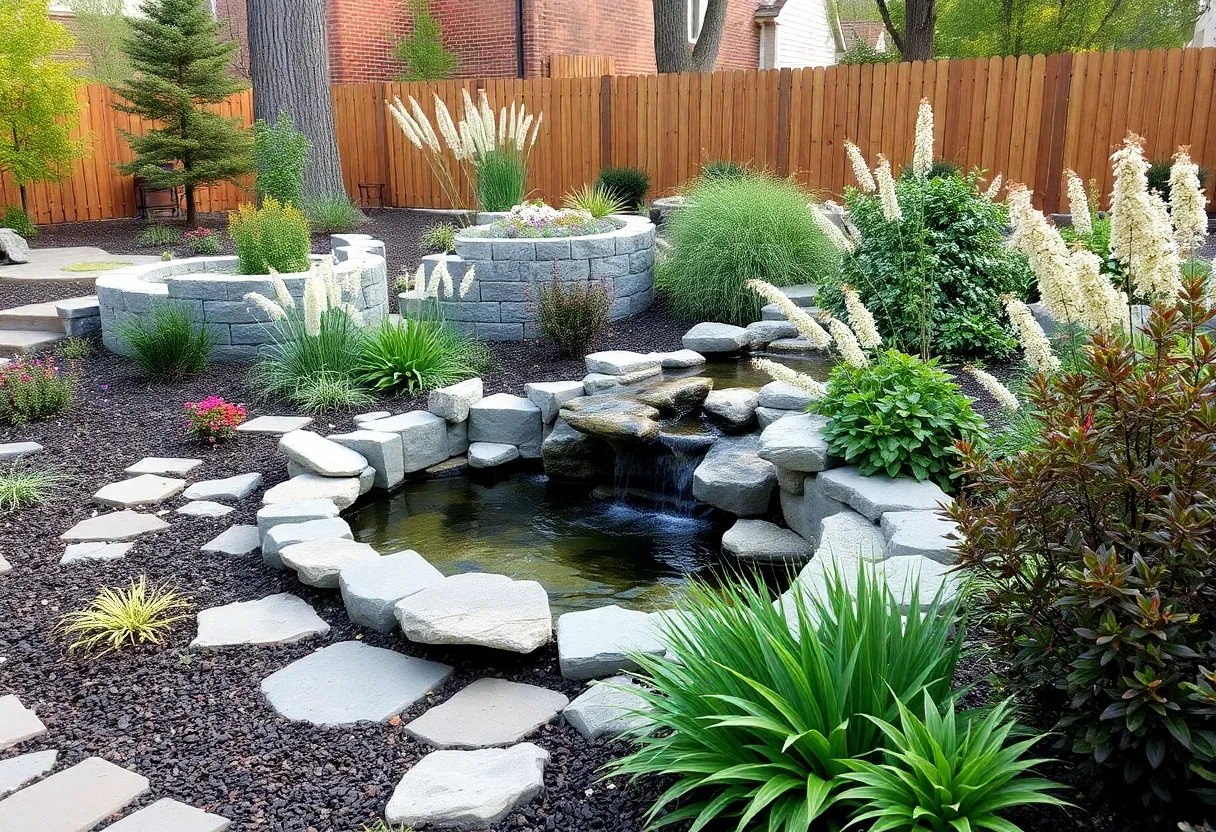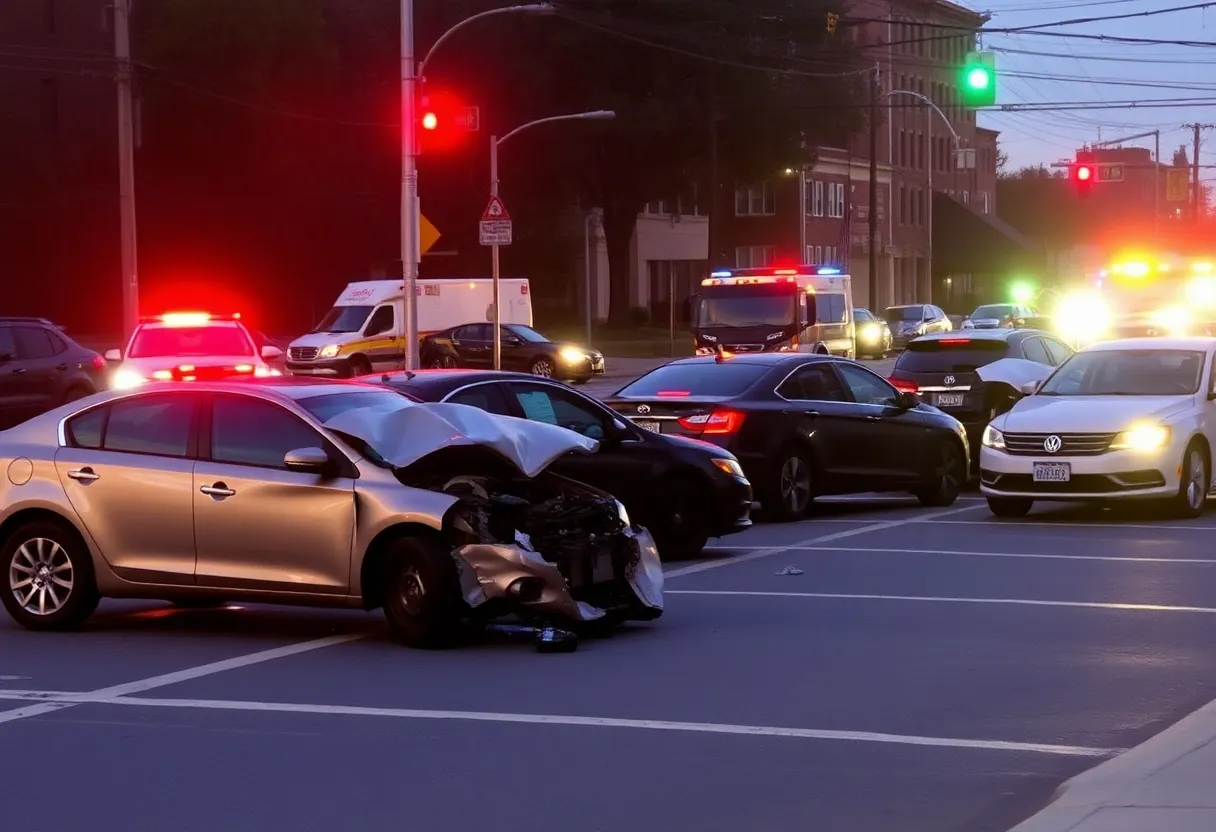10 Amazing Garden Design Ideas to Make Your Philadelphia Home Stand Out
Creating an outstanding garden for your Philadelphia residence requires deliberate planning and innovative design solutions. This article explores ten impactful ideas to elevate your outdoor space’s visual appeal and functionality. Implementing these strategies will not only beautify your property but also contribute to ecological health and sustainable living practices.
1. Embrace Native Plantings for Low-Maintenance and Ecological Support
Native plantings are essential for fostering a sustainable, low-effort garden. They are adapted to Philadelphia’s climate, requiring less water, fertilizer, and pest control. Incorporating native species encourages local wildlife, including pollinators and birds, thereby supporting biodiversity.
Key native plants include:
- Amsonia hubrichtii: Exhibits feathery foliage and striking golden hues in fall.
- Asclepias tuberosa: Bright orange blooms that attract butterflies and bees.
- Panicum ‘Northwind’: An upright grass providing vertical texture and movement.
- Phlox subulata: Evergreen groundcover ideal for borders and creating lush ground layers.
Choosing native plants aligns with eco-friendly gardening, reducing maintenance while enhancing local habitats.
2. Design a Pollinator-Friendly Habitat to Support Vital Ecosystems
Creating a habitat that attracts and sustains pollinators contributes directly to biodiversity and plant health. A thoughtfully designed garden incorporates a variety of flowering plants with staggered bloom times, ensuring continuous nectar sources throughout the seasons.
Effective strategies include:
- Planting a diverse array of perennials, herbs, and shrubs.
- Including wildflowers and native flowering species for year-round interest.
- Providing nectar-rich plants that appeal to bees, butterflies, and hummingbirds.
This approach fosters a resilient garden ecosystem, supporting pollinator populations vital for fruit and vegetable production.
3. Incorporate Vertical Elements for Space Optimization and Visual Interest
Vertical gardening maximizes limited space, especially in urban environments like Philadelphia. Adding trellises, arbors, and climbing plants creates layered visual interest and additional planting zones.
Popular options include:
- Grapevines or clematis on pergolas.
- Climbing roses or jasmine for fragrance and colour.
- Vertical planters or wall-mounted pockets for small-space planting.
These structures can serve dual roles as aesthetic focal points and functional shade providers.
4. Utilize Raised Beds to Enhance Vegetable and Herb Cultivation
Raised beds offer a controlled environment optimal for growing vegetables, herbs, and flowers. They improve drainage, reduce soil compaction, and allow easier access for maintenance.
Design considerations include:
- Using durable materials like cedar, composite, or brick.
- Customizing height to accommodate accessibility needs.
- Mixing soil amendments tailored for specific crops.
Raised beds enable urban gardeners in Philadelphia to maximize limited space and extend the planting season.
5. Hardscaping Elements Define Structure and Functionality
Introducing hardscape features such as *stone pathways, patios, and retaining walls* establishes spatial boundaries. They serve as functional and aesthetic anchors, guiding movement and delineating zones.
Considerations include:
- Using natural or stamped concrete for durable walkways.
- Creating seating and dining areas with weather-resistant furnishings.
- Incorporating textured materials to complement plantings.
Hardscaping adds tactile contrast, structural balance, and usability to your garden environment.
6. Adopt Sustainable Practices for an Environmentally Resilient Garden
Implementing eco-friendly practices reduces environmental impact and promotes garden resilience. Core sustainable strategies include:
- Composting organic waste to enrich soil naturally.
- Rainwater harvesting to minimize dependence on municipal water sources.
- Organic fertilizers to prevent chemical runoff and support soil health.
Sustainable gardening not only benefits the environment but can also lower maintenance costs over time.
7. Incorporate Water Features to Enhance Tranquility and Wildlife Attraction
Adding water features transforms your garden into a serene retreat while supporting local fauna. Options include:
- Ponds: Provide habitat for amphibians and aquatic plants.
- Fountains: Create soothing sounds and visual focal points.
- Birdbaths: Attract local bird species and satisfy their hydration needs.
Ensure water features are designed for ease of maintenance and integrated harmoniously with surrounding plantings.
8. Create Outdoor Living Spaces for Leisure and Entertainment
Designing designated areas for relaxation extends your living space outdoors. Consider features such as:
- Outdoor kitchens with durable appliances and countertops.
- Comfortable lounge furniture with weather-resistant fabrics.
- Shade structures like pergolas or umbrellas for sun protection.
This investment enhances usability, extends the outdoor season, and fosters social interaction.
9. Plan for Seasonal Interest to Maintain Year-Round Appeal
Ensuring your garden offers visual stimulation in all seasons requires strategic plant selection. Focus on:
- Plants with varying bloom times.
- Foliage that changes color in fall.
- Evergreen elements to provide structure during winter.
This holistic approach guarantees your garden remains attractive, regardless of the season.
10. Personalize Your Garden with Art and Decorative Elements
Add distinctive touches to showcase your style and create focal points. Options include:
- Garden sculptures or statues.
- Decorative planters with unique designs.
- Mosaic paths or wall art.
Personalized decor fosters a unique garden identity, inviting curiosity and conversation among visitors.
Frequently Asked Questions
What are the best native plants for Philadelphia gardens?
Ideal native plants include Amsonia hubrichtii, Asclepias tuberosa, Panicum ‘Northwind’, and Phlox subulata—each offering low maintenance, ecological benefits, and seasonal visual interest.
How can I support pollinators effectively in my garden?
Plant a diverse array of native flowering plants, stagger bloom times, and include nectar-rich species to provide consistent food for bees, butterflies, and hummingbirds throughout the year.
What are practical hardscaping options for small urban gardens?
Using natural stone pathways, compact patios, and vertical wall installations optimizes limited space while creating aesthetic and functional zones.
How does sustainable gardening benefit my property?
Eco-friendly practices such as composting, rainwater harvesting, and organics improve soil health, reduce costs, and create a resilient, environmentally responsible garden.
What seasonal plants should I consider for year-round interest?
Incorporate plants with staggered bloom periods, colorful foliage, and evergreen structures to ensure ongoing visual appeal during all seasons.
Key Features of an Effective Garden Design Strategy
| Feature | Benefit | Implementation Tip |
|---|---|---|
| Native Plantings | Supports local ecology, reduces upkeep | Select adaptable species suited to climate and soil conditions |
| Pollinator Habitat | Enhances biodiversity, improves plant health | Ensure continuous flowering with diverse plant selections |
| Vertical Features | Maximizes space, adds visual interest | Integrate climbing plants with sturdy support structures |
| Raised Beds | Better soil control, easier access | Use durable, weather-resistant materials |
| Hardscaping | Defines space, improves functionality | Choose natural textures that complement plantings |
| Sustainable Practices | Reduces environmental impact | Implement composting, rainwater harvesting, organics |
| Water Features | Creates tranquil atmosphere, attracts wildlife | Design for low maintenance and harmonious integration |
| Outdoor Living Areas | Expands usable space, encourages outdoor activities | Use weatherproof furniture and shading elements |
| Seasonal Planning | Consistent visual interest | Select plants with staggered bloom and color cycles |
| Decor & Art | Personalizes the space, adds focal points | Incorporate sculptures, mosaics, and decorative planters |
Author: STAFF HERE PHILADELPHIA WRITER
The PHILADELPHIA STAFF WRITER represents the experienced team at HEREPhiladelphia.com, your go-to source for actionable local news and information in Philadelphia, Philadelphia County, and beyond. Specializing in "news you can use," we cover essential topics like product reviews for personal and business needs, local business directories, politics, real estate trends, neighborhood insights, and state news affecting the area—with deep expertise drawn from years of dedicated reporting and strong community input, including local press releases and business updates. We deliver top reporting on high-value events such as Mummers Parade, Philadelphia Flower Show, and Thanksgiving Day Parade. Our coverage extends to key organizations like the Greater Philadelphia Chamber of Commerce and United Way of Greater Philadelphia, plus leading businesses in telecommunications, food services, and healthcare that power the local economy such as Comcast, Aramark, and Children's Hospital of Philadelphia. As part of the broader HERE network, we provide comprehensive, credible insights into Pennsylvania's dynamic landscape.





